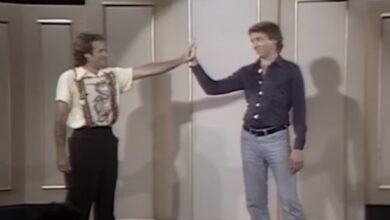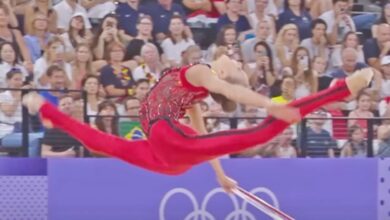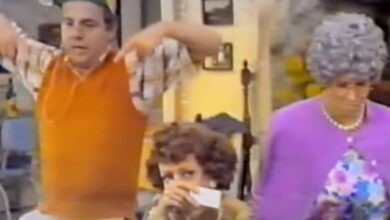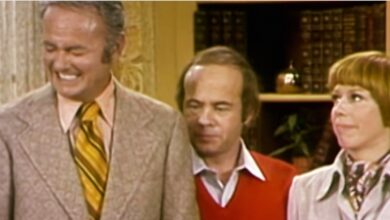The Jimi Hendrix Experience’s “Voodoo Child (Slight Return)” Live in Maui, 1970: A Firestorm of Genius Near the End of an Era
When Jimi Hendrix performed “Voodoo Child (Slight Return)” live in Maui in 1970, it was more than just another concert moment—it was a searing embodiment of his creative zenith. Originally released in 1968 on the landmark Electric Ladyland album, the song already carried a thunderous presence, but in this live rendition, Hendrix pushed its energy and emotion to even greater heights. Set against the surreal backdrop of Hawaii’s Haleakalā volcano, this version offered a glimpse into the raw power and spiritual electricity of Hendrix’s final months.
Born in Seattle in 1942, Jimi Hendrix was a musical force shaped by a blend of blues roots, rock ambition, and boundless curiosity. After serving in the U.S. Army, he cut his teeth on the American R&B circuit before taking London by storm in 1966. There, he formed the Jimi Hendrix Experience with Noel Redding and Mitch Mitchell, instantly setting himself apart with a left-handed guitar technique, blazing stage presence, and unprecedented use of distortion, feedback, and the wah-wah pedal.
“Voodoo Child (Slight Return)” has its origins in a spontaneous jam session. On May 2, 1968, Hendrix laid down a 15-minute blues exploration titled “Voodoo Chile” alongside Steve Winwood and Jack Casady. The next day, during a televised studio shoot, Hendrix regrouped with Redding and Mitchell to record a shorter, sharper rendition of the idea. This take became “Voodoo Child (Slight Return)”—a tight, thunderous anthem laced with electricity, groove, and Hendrix’s signature lyrical mysticism.
The Maui performance, recorded on July 30, 1970, was part of the ill-fated Rainbow Bridge film project. Despite difficult weather conditions and technical limitations, Hendrix—this time joined by bassist Billy Cox and Mitch Mitchell—delivered a blistering set. “Voodoo Child” stood out as the show’s emotional and musical climax, with Hendrix using his guitar like a weapon and a wand, channeling both fury and finesse into every note. His mastery of tone, feedback, and phrasing was as fearless as it was transcendent.
Originally, the studio version reached modest chart success in the U.S., but it became a cultural juggernaut following Hendrix’s death. In the UK, the song was posthumously released as a single and soared to No. 1 in December 1970. Its explosive sound and emotional intensity gave it broad appeal across rock, blues, and psychedelic music fans. The Maui live version, later released in 2020, showcased the song’s endurance and Hendrix’s live prowess in stark, thrilling clarity.
Beyond its chart performance, “Voodoo Child (Slight Return)” symbolized the widening reach of rock and blues fusion. Hendrix took traditional blues themes and modernized them with a cosmic edge, bridging racial and generational divides. In an era when musical experimentation often overshadowed emotional authenticity, Hendrix managed to deliver both—unfiltered, urgent, and utterly real.
This performance in Maui also underscored Hendrix’s unwavering dedication to his art. Even in an unconventional setting, far from the usual concert halls, he brought his full self to the stage. That commitment reflected not only his professionalism but a deep need to channel emotion through sound—something his fans recognized and felt every time he played.
Few songs in Hendrix’s catalog have inspired as many reinterpretations. Stevie Ray Vaughan’s incendiary version introduced “Voodoo Child” to a whole new audience in the 1980s, preserving its spirit while layering it with Texas blues grit. Dozens of artists across rock, metal, jazz, and even world music have paid homage to the track, each version serving as both tribute and testimony to its timeless resonance.
The song has been featured in various cultural moments, from movie soundtracks to political rallies, where its tone of defiance and spiritual power often mirrors the times. Hendrix’s cryptic, defiant lyrics—“If I don’t meet you no more in this world / I’ll meet you in the next one, and don’t be late”—have taken on deeper meaning as years pass, often cited in remembrance of his brief but blazing journey.
Adding weight to the performance’s legacy is the fact that it occurred just weeks before Hendrix’s tragic death on September 18, 1970. Viewed through that lens, the Maui version of “Voodoo Child” feels almost prophetic—a blazing farewell from a man who gave everything to his music. His expression in those final live moments is both triumphant and haunting.
When the Live in Maui album was finally released in 2020, it offered a new generation a front-row seat to one of Hendrix’s last and most intense performances. The remastered audio revealed subtle nuances in his playing, reaffirming that even in less-than-perfect conditions, Hendrix could conjure magic from every amp, every string, every breath.
The influence of “Voodoo Child (Slight Return)” on the evolution of guitar music cannot be overstated. Its techniques have been studied by generations of guitarists. Hendrix’s approach—layering aggression with soul, chaos with control—set the blueprint for future rock expression. From Eddie Van Halen to Tom Morello, its echoes are everywhere.
Even decades after Hendrix’s passing, his legacy is kept alive through countless tributes, honors, and educational initiatives. The Rock and Roll Hall of Fame, Grammy Foundation, and numerous documentaries have all highlighted “Voodoo Child” as a defining moment in modern music. It’s a song that has become synonymous with Hendrix himself—wild, revolutionary, unforgettable.
In the end, “Voodoo Child (Slight Return)” is more than just a song—it’s a rite of passage, a sonic landmark, and a symbol of creative freedom. And the Maui performance, captured against the elements and the ticking clock of Hendrix’s final days, is a moment that crystallized everything he was: a trailblazer, a poet of sound, and the soul of a musical revolution.





